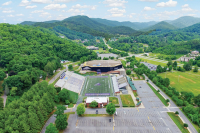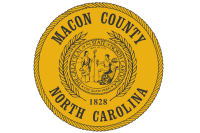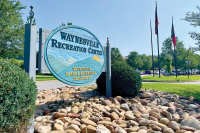Forest Hills doesn’t have the green to buy abandoned golf course
Forest Hills residents and town leaders overwhelmingly opposed purchasing a 60-acre abandoned golf course in the middle of their community at a public hearing last week.
Buying the abandon golf course would save it from becoming a housing development and provide open space and recreation. But the $1 million price tag was too much for the small community near Western Carolina University to absorb given its tiny population.
A dozen or so residents spoke at the public hearing, and all were against buying the tract except for one. Council members also opposed the plan unanimously.
The cost and long-term upkeep were the most prevalent reasons not to.
“I’m opposed to the village buying this property,” said resident Jean Adams. “I think we cannot afford it.”
Related Items
Land owner and developer Chris Green offered the village the option of purchasing the 60-acre tract. It was once maintained as a golf course and was a selling point for the Forest Hills housing subdivision, but it hasn’t been in operation for at least two decades.
However, the actual lay of the land has not changed all that much. Many homes in Forest Hills butt against the former golf course, except instead of rolling greens its overgrown in bushes and scrub.
The community’s restrictive development rules greatly limit how many homes could be built on the tract — there’s a minimum of two-acre lots. Still, converting the open land into a housing development would have a visual impact for many residents.
Village Mayor Jim Wallace said buying the land might be the village’s only guarantee as to determining its future.
“The only way to preserve it and control it is to buy it,” Wallace said.
The old golf course has potential to be the site of a community center with a surrounding park and recreation space for residents.
Green has extended several financing options to the village if it were to buy the tract. A 10-year plan would come out to monthly payments of more than $11,000 and a 20-year plan with monthly payments of about $9,000. The village would also have to shell out $50,000 in a down payment.
For the 130 homeowners in the village, that would translate to about an extra $70 to $85 each month in property taxes. And for a village that has no full-time employees and an annual operating budget of $80,000, the property would be a hefty undertaking.
Apart from the cost of land, there would also be costs associated with upkeep, maintenance and management of the land.
“Where it stops, nobody knows,” said Wallace.
At one point during the meeting, village council members asked the small crowd, by a show of hands, who was against buying the land. Nearly everyone one in the room raised their hands.
A call for those in favor yielded no raised hands. However, Carl Iobst spoke at the public hearing last week and expressed his interest in the village taking over the property.
“In general, I’m not in favor of a tax increase,” said Iobst. Then he went on to say the residents might be able to recoup its costs by purchasing the land and then leasing it for agricultural purposes. “It would also help bring money back and defray costs,” he said.
The valley was historically a prime area for farming and livestock, and it might benefit the community to return it to that purpose, Iobst said. He also suggested the village put the matter to a referendum vote.
Resident Lee Budahl said the local laws should supply residents with some reassurances that nothing out of the ordinary will be done with the land.
“Anyone who builds a home on a two-acre plot of land is probably going to have a space that is pretty nice to look at,” he said.
Councilmember Clark Corwin asked if Green would even be able to develop two-acre home sites and sell them for a reasonable price.
“What he’d have to ask for a two-acre lot with a home might be prohibitive in today’s economy,” Corwin said.
The council chose to notify Green the village would not be purchasing the land, and Wallace said he would deliver the message. Wallace has been acting as a liaison between Green and the council. Green did not attend the meeting nor has he given any concrete plans as to what his development scheme might look like.
Many who spoke at the meeting, although not in favor of buying the golf course, wanted to work with Green to develop the property in a way that suits the community. Janie Prentice, chairwoman of the village’s planning board, said she would like the village to keep open channels of communication with the developer. There could be an opportunity to incorporate a community center, public green space, a nursing home or other amenities that could be useful to villagers into a residential development, she said.
“We need to have a committee develop for people interested in talking with Mr. Green on behalf of the village,” she said. “I think he needs to know what we want.”









